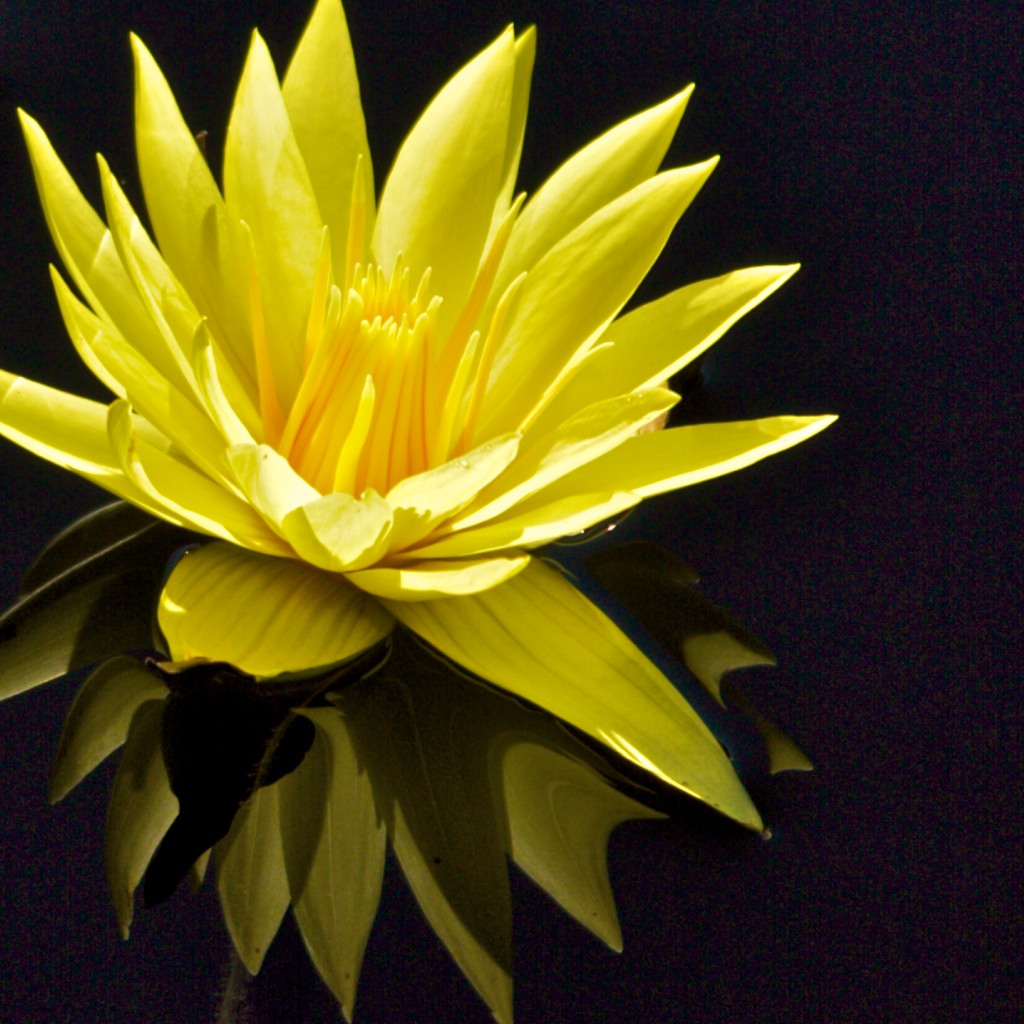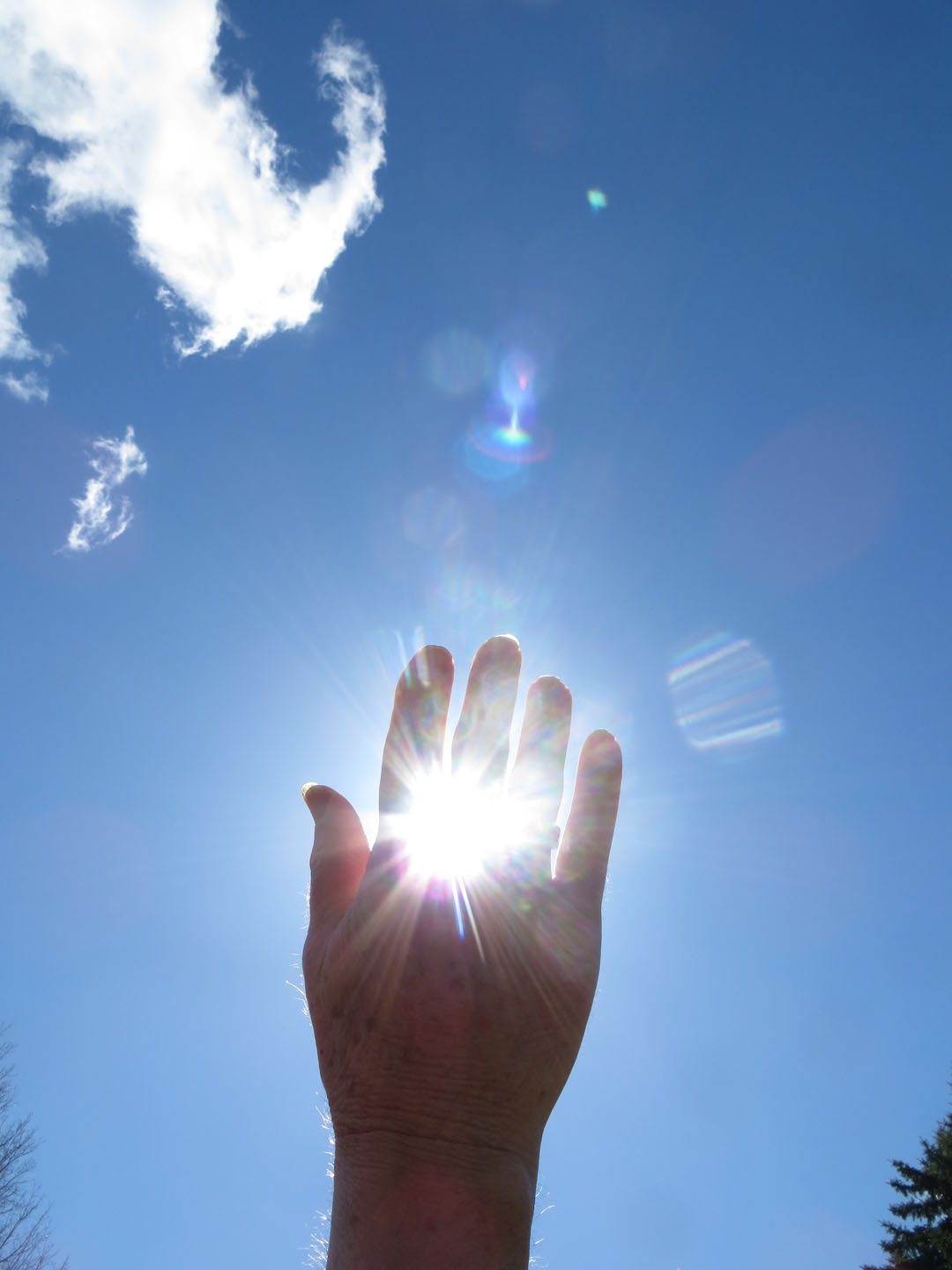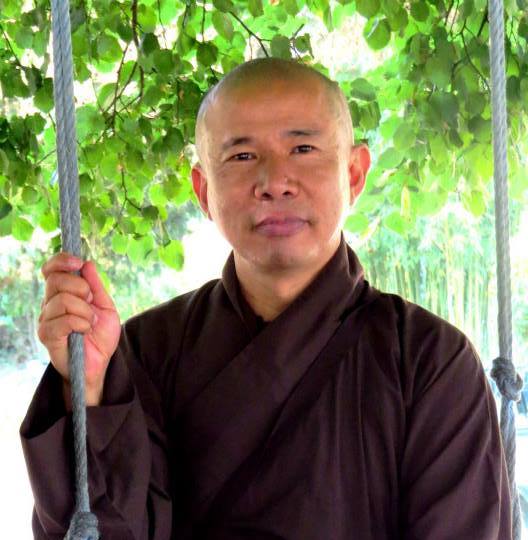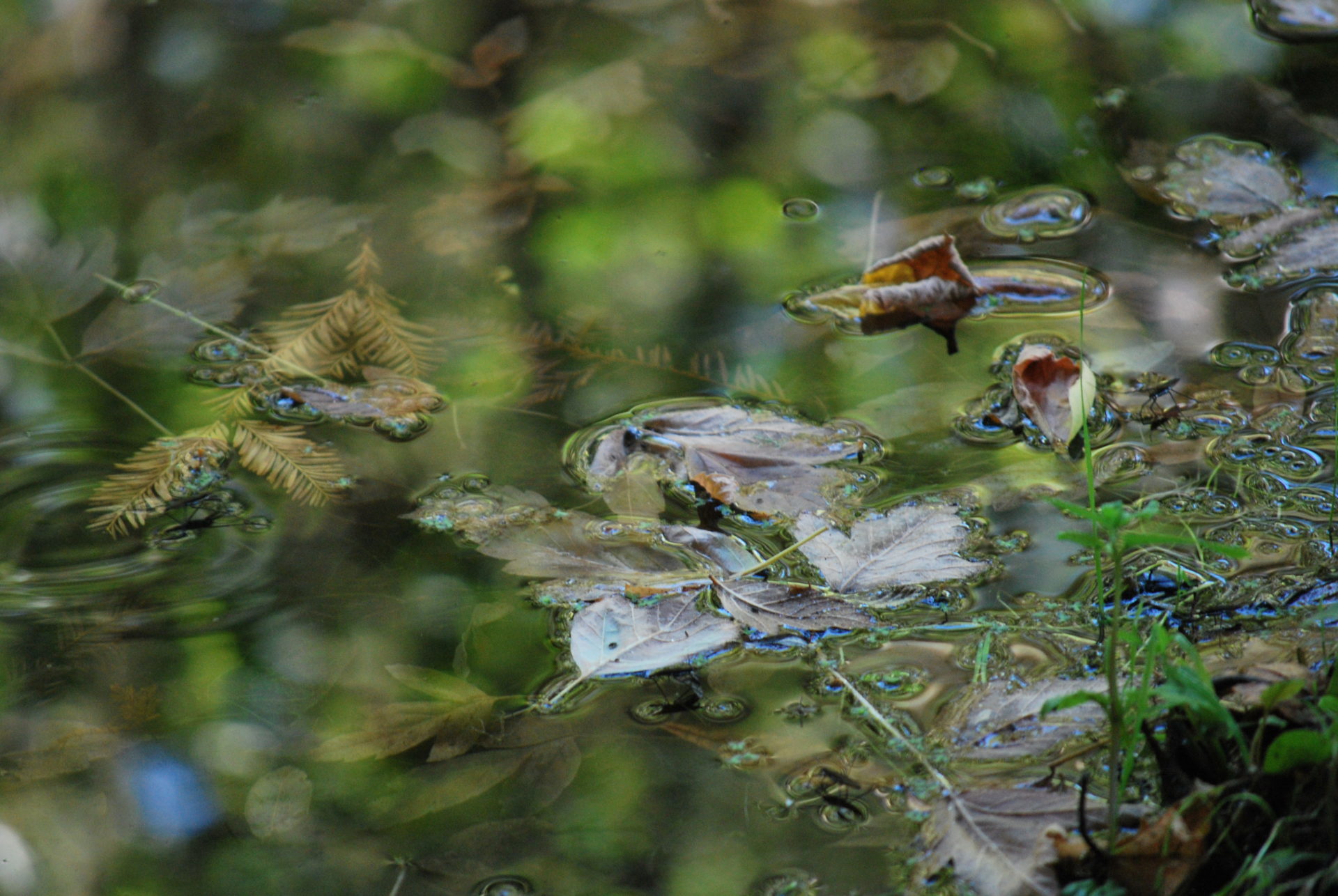By Chan Phap Dang

I would like to share the practices I used to heal cancer, not with the intention to brag about my knowledge of illness, medicine, or meditation. In truth, I know little about illness and medicine. But two and half years ago, I did have colon cancer.
Perhaps the tumor had been in my body for a long time.
By Chan Phap Dang

I would like to share the practices I used to heal cancer, not with the intention to brag about my knowledge of illness, medicine, or meditation. In truth, I know little about illness and medicine. But two and half years ago, I did have colon cancer.
Perhaps the tumor had been in my body for a long time. I had pain on the right side of my abdomen for about seven months. At times, the pain was so intense that I had fevers in the middle of a very cold winter. Every time the pain was too intense, I placed both hands on the painful area until the pain lessened. My younger sister had shared this practice with me.
I have shared that I know very little about medicine and illness. This is the truth because I completely did not know that I was seriously ill. I did not like to see doctors because I don’t have faith or sympathy with the automatic ways of examination that characterize many doctors. I truly apologize to doctors because it is not usual to find a doctor who has a heart, conscience, time, and a deep knowledge of illnesses.
Whenever my pain was intense, I fasted for three days. For about two months prior to my surgery, I could hardly eat anything because every time I ate, I often had intense pain in my intestines. Therefore, I often ate oatmeal and porridge and drank fruit juice. One thing that concerned me very much was that my strength deteriorated very quickly. After doing physical work for about two hours, I felt completely exhausted in a way I had never felt before. My body lost so much weight. However, I did not feel worried or afraid. I still joyfully lived each day, worked as usual, and traveled to various places to lead retreats.
Not until I was in Vietnam to take care of family business did the pain become fierce and unbearable. The first time I went to the Central Hospital in Hue, they examined me superficially and quickly, and gave me antibiotics. When I took the antibiotics, I felt more pain. My abdomen became very swollen.
Finally, I telephoned Dr. Ton That Cau to explain my pain to him. I was fortunate to have known the doctor because his wife had often come to Tu Hieu Pagoda, our root temple, to listen to my talks on Sundays. The doctor suggested that I go to the emergency room. Thanks to his contact with people at the emergency room, I was seen quickly and examined thoroughly. They performed a colonoscopy and found an enormous tumor in my large intestine.
The tumor was as big as a duck egg, and therefore the doctors said to me, “You need to have surgery this week.” After surgical removal of the tumor and consultation among themselves, the doctors concluded that it was a stage three malignant tumor. The tumor had already ruptured; thus, a small percentage of the cancer cells had gone into the bloodstream. They suggested that I have chemotherapy a month after the surgery.
I had a conviction that if I treated it with chemotherapy, I would not be able to overcome this serious illness. Besides, I was very weak and questioned whether I would be able to tolerate any kind of treatment with Western medicine. I knew my body needed rest and relaxation, not more needles, tubes, blood tests, or pharmaceutical medicines. I have always trusted my body’s capacity to heal. Therefore, I was determined not to be treated with chemotherapy even though the doctors tried to convince me in many different ways. I decided to treat my illness with meditation and herbs.

Right now, more than two years later, I feel better than I have at any other time in my life. Last year when I returned to the United States for my paperwork, I had a CT scan and the doctors could not find any tumors in my body. My blood test results were good. I believe with certainty that I am completely healed. Thinking of many others who are in tremendous pain due to cancer, I feel moved to share my experiences of healing myself with wholesome methods and practices of mindfulness. I share this with friends, relatives, and everyone, hoping that those with cancer will also have an opportunity to cure themselves and not have to go through intense pain or die unnecessarily.
Thanks to my illness, my eyes have been opened to see that health is the most precious thing in life. It has helped me to treasure my own life and the lives of my loved ones. Thanks to my sickness, I was able to let go of my cravings, calculations, struggles, and searching, and to return to myself and touch deeply the life that is happening in the present moment. I truly savor every breath, every step, because I was not able to breathe after the surgery and was not able to walk when I was in the hospital for two weeks.
Paying attention to the butterflies, sun rays, flowers, and leaves that surround me, I see that everything is beautiful, precious, and lovely. I see clearly that nothing is more precious than normal health and being alive. Thanks to life, I have another day to live and love.
FOUNDATION FOR HEALING
Mindfulness is a miracle drug. Mindfulness is the energy of sensitivity, the ardent power that has the capacity to receive many sources of energy that are fresh, wholesome, and nourishing. Therefore, mindfulness is the foundation for all healing, just as an antibiotic is capable of curing many illnesses.
In Buddhism, the capacity to know what is happening in the present moment is called mindfulness, or awakening. Awakening is knowing, being aware, and being sensitive. Bringing the mind back to the body in a state of oneness so that body and mind dwell in the present moment is mindfulness.
Mindfulness is the light that shines upon all phenomena, just as the sun shines on all trees, flowers, and leaves. Hello, sickness. Hello, pain. Hello, sadness. Hello, fear and anxiety. You behold and embrace these things in the light of mindfulness. You embrace and comfort the illness, soothing and easing it. Mindfulness is the loving heart of a mother that does not discriminate, judge, blame, or demand. The mother embraces the child, the illness, with love.
You can use your breath, your steps, or your smile to generate such awareness. Mindfulness can be generated not just in sitting meditation or walking meditation, but also in all activities in daily life, such as watering plants, washing dishes, doing the laundry, cooking, driving, cleaning the house, eating, drinking, or working. You eat and know you are eating; that’s mindfulness. When you walk and are aware of each step and feel your feet kissing the earth, you are lighting up the lamp of mindfulness.
When mindfulness is weak, it’s like a lamp that is dim. Strong mindfulness is like the bright light of the sun. Your mind can be like a dark room. With mindfulness, your mind will light up, and without mindfulness, your mind will darken. If the light is dim, your mind is dull. If the light is bright, your mind radiates.
Mindfulness is like a bright flame that can burn away all sadness, worry, fear, and despair. If you have ever seen a bonfire, you’ve seen sparks that rise up high and brighten the sky. Mindfulness is an energy that is used to ignite the flame of the mind, just as a battery or a current of electricity can light up a light bulb.
Mindfulness is always mindfulness of something. You are aware that you are peaceful or lonely. You are aware that your teeth hurt. You are aware that you are hungry. When you eat, what are you eating? You eat bread, rice, and fruits because you cannot eat without having an object of eating. In Buddhist psychology, the subject manifests at the same time as the object. You see a flower because you pay attention to it; therefore, the flower is present. There are times when a flower is blooming by the roadside but we are unaware of it because our mind does not pay attention to it. You can hear the singing of a stream because you are attentive to its sound, and therefore the stream is truly present. “This is because that is” is the basic teaching. Every action contains both subject and object. Love, joy, sadness, and mindfulness are also like that. Mind and object of mind are one.
When there is mindfulness, your mind is with your body. When you pay attention to your breathing, you have mindfulness of breathing. This is called mindful breathing. When you are aware of each step you place on the earth, that is mindfulness of your steps. Those steps are called mindful walking. Therefore, practicing mindful breathing or mindful walking, you generate and cultivate mindfulness. With the light of mindfulness, you are truly there in each moment of life and you live that moment deeply. Mindfulness helps you come in touch with the wonders inside you and around you, which have the capacity to nourish, heal, and transform.
EMBRACING PAIN AND ILLNESS
Illness is a crying baby, and the pain is the crying. When the pain arises, you don’t react with fear, anxiety, shouting, seeing a doctor, or taking painkillers. Instead, you return immediately to mindful breathing, generating the energy of awareness and clarity to embrace the pain. That pain is only a physical pain. It is a sign to know something is happening in your body.
You can use your hands to embrace yourself, to embrace the pain, with your head lightly bent downward like a mother holding a child. There is disease in the body, and you can breathe in this posture many times. Imagine the pain or illness as a baby and the awareness and clarity as the mother. The mother holds the child in her hands. Gradually, these two energies harmonize and bring healing.
Embrace your pain and illness as you would hold a cup of tea in your two hands. Embrace it gently. Breathe mindfully, smile, and call the name of your pain or illness. The breathing can embrace the pain and illness, and you feel at ease. The pain and illness gradually diminish. Please breathe now.
When you are in great pain, you can practice walking meditation, jogging meditation, sitting meditation, or even mindful work, as long as it helps you to embrace that pain. You do not suppress the pain but merely recognize it, calling it by its true name; embrace it and see the pain as a wounded child. We all were children at one point, and perhaps that child has many wounds in her body and mind. Therefore, we use the wholesome energy of the mother to heal the wounded child.
Anger is also a wounded child in us that is crying. Anger, fear, anxiety, despair, and agitation are all sickness of the mind. Sickness of the mind is often more serious and difficult to cure than sickness in the body. Embrace that wounded child so that it can have a chance to be healed.
As a child, you may have gone through difficult times when you were neglected, abused, or even tortured by grownups. And these wounds are still there, intact. In the practice of healing, you need to have time to return to yourself and come in touch with the wounded child in yourself in order to heal these wounds. Use the energy of mindfulness to be there with the wounded child, embrace him, talk to him, and comfort him. You can also practice visualizing your mother and father as five-year-old children—vulnerable, fragile, and easily hurt just as you were at that age. Seeing your mother and father as vulnerable and fragile children, you give rise to compassion. You see that your mother and father were victims of abuse or torture as children, and understanding and compassion grow in your heart. This is when your wound begins to heal.
Those who do not know the practice use ways to suppress, deny, and avoid their suffering by covering it up with unhealthy consumption, such as using alcohol, watching TV, reading novels, listening to music, dancing, or talking on the phone. When they are suppressed and covered up, the suffering and pain do not have a chance to unfold in the light of mindfulness in order to heal.
We all want to avoid suffering because we feel overwhelmed by it. This way of healing is equipped with the energy of mindfulness in every step, every breath, and every smile. Therefore, you will have enough strength to return to yourself and embrace the suffering and pain. Embracing the suffering can help soothe and lessen it. Gradually, you will see that the suffering and pain have their roots in the wounded child in yourself and in your mother and father.
Cultivating and maintaining mindfulness will give rise to focus and concentration on the object of mind. It is called right concentration. It is also called “mind is one with object,” which means that the mind focuses on its object. Right concentration is like a spotlight that focuses on the singer on stage so that everyone can see her clearly when she sings, dances, smiles. Concentration is like a torch that can burn up all thinking, ideas, and emotions that are not beneficial to you.
With concentration, mindfulness helps you delve deeply into the nature of suffering so you can see its roots. From this understanding, suffering can be transformed. The powerful energy of mindfulness can help you discover the truth of your suffering and sickness. This is called insight. Mindfulness, concentration, and insight are three sources of energy—three kinds of light that can be generated through the practice.
Please take a few in-breaths and out-breaths. Breathe to feel lighter in your mind. Can you feel the sunshine of your heart and mind? Can you feel the fresh air?

Chan Phap Dang, B.A. in Aerospace and Space Technology, ordained in 1990 and has been a Dharma teacher since 1996. He is the author of several books in Vietnamese on meditation and transformation. His last book was translated into English with the title A Beautiful Life. This article is an excerpt from his new book manuscript, Healing Cancer with Mindfulness, which includes sections on healing with mindfulness practices, as well as an interview on healing methods he used after surgery
and treatment.

